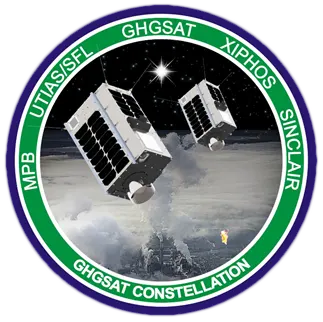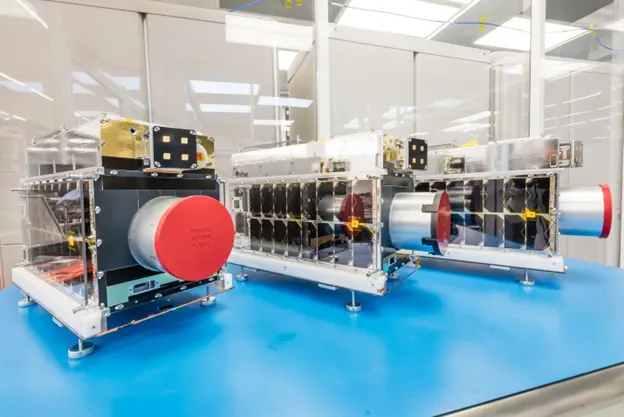GHGSat
For global monitoring of greenhouse gases


The Space Flight Laboratory (SFL) built and launched the GHGSat-C1 and C2 greenhouse gas monitoring satellites for GHGSat Inc. on 2 September 2020 and 24 January 2021, respectively. The two 15-kilogram microsatellites are commercial follow-ons to the GHGSat-D (CLAIRE) demonstration satellite developed and launched by SFL in 2016.
On 25 May 2022, SFL launched GHGSat-C3, C4, and C5 satellites to join the three others already in orbit, and the GHGSat-C6, C7, and C8 satellites developed by SFL successfully launched on 15 April 2023.
Using attitude control technology developed by SFL for precise pointing of sensors aboard low-inertia platforms in orbit, the GHGSat constellation detects and measures greenhouse gas emissions from sources on the Earth’s surface.
All eight commercial GHGSat satellites (C1-C8) and CLAIRE have been developed using SFL’s low-cost, high-performance Next-generation Earth Monitoring and Observation (NEMO) microsatellite platform. The precise attitude control and target tracking capability of the NEMO bus – rare among satellite platforms of that size – play a key role in the accurate pointing of the sensors.
GHGSat’s mission is to become the global reference for remote sensing of greenhouse gas (GHG) and air quality gas (AQG) emissions from industrial sites, using satellite technology.
GHGSat’s novel technology enables GHG and AQG measurement with better accuracy at a fraction of the cost of comparable alternatives. Owners of industrial facilities will be able to monitor all their facilities, local or remote, anywhere in the world, with a common technology, in near-real-time. Significantly improved emissions information will enable industries to better measure, control, and ultimately reduce emissions of GHGs and AQGs.
GHGSat monitors greenhouse gas (GHG) and air quality gas (AQG) emissions for several industries, including oil & gas, power generation, mining, pulp & paper, pipelines (natural gas), landfill, chemicals, metals & aluminum, cement, agriculture, and transportation.
In each of these industries, GHGSat measures emissions from target sites, anywhere in the world. Sites can include industrial facilities with fixed, concentrated sources of emissions (e.g., stacks), area sources with emission hotspots (e.g., landfill methane, pipeline leaks), fugitive sources over wide areas (e.g., tailings ponds, mine faces), and mobile emitters (e.g., ships).
Each GHGSat satellite provides periodic, high-precision measurements of emissions from thousands of such sites. Targeting of measured emissions is confirmed with visual imagery from the same satellite. GHGSat instruments are calibrated regularly, and measured data is verified and validated against known sources.
GHGSat provides measurements of emissions at each site without using any on-site equipment. However, GHGSat can augment its measured data with any publicly available data (e.g., local meteorological towers) or private customer data.
Visit www.ghgsat.com for more information on GHGSat.

